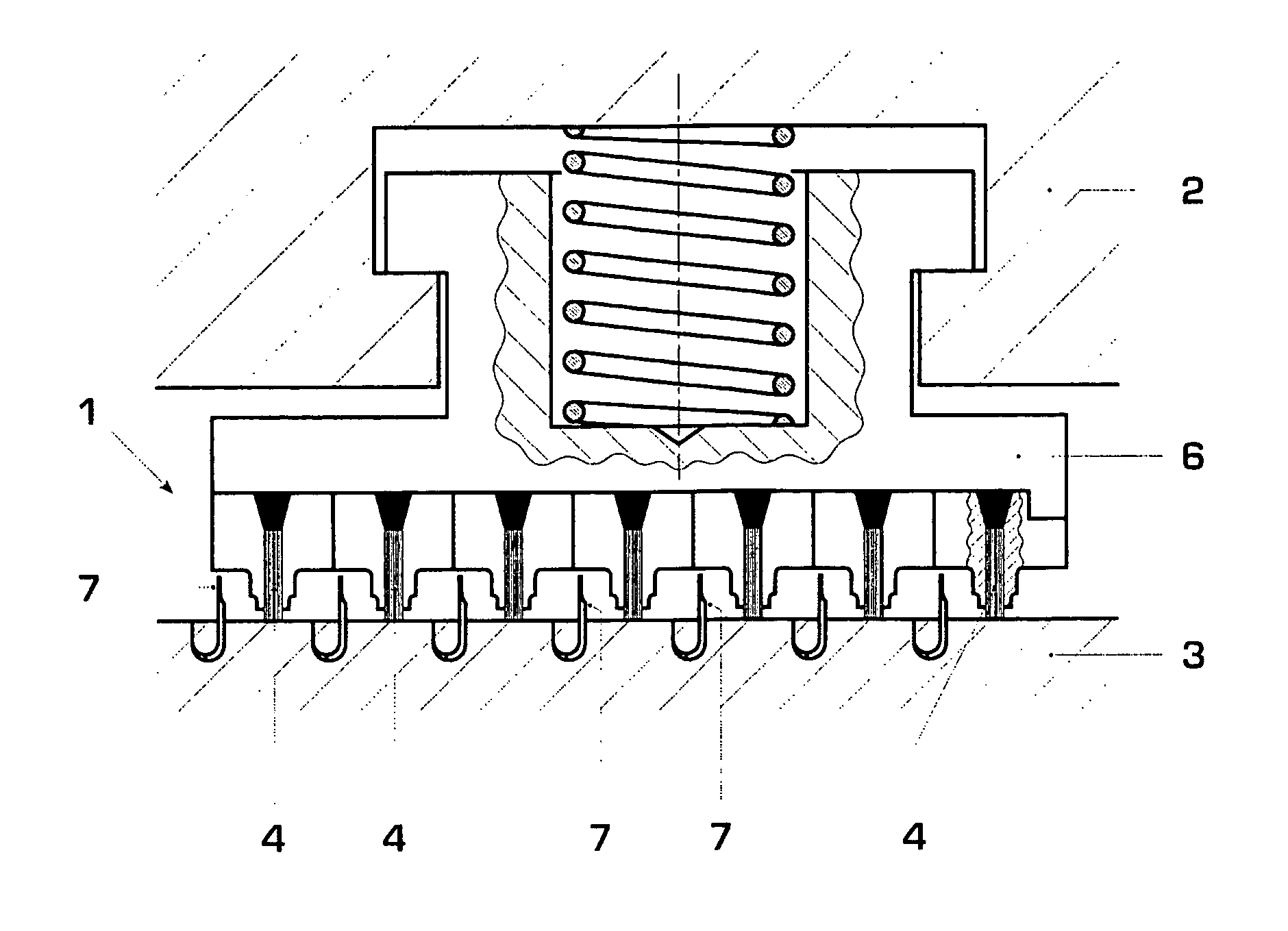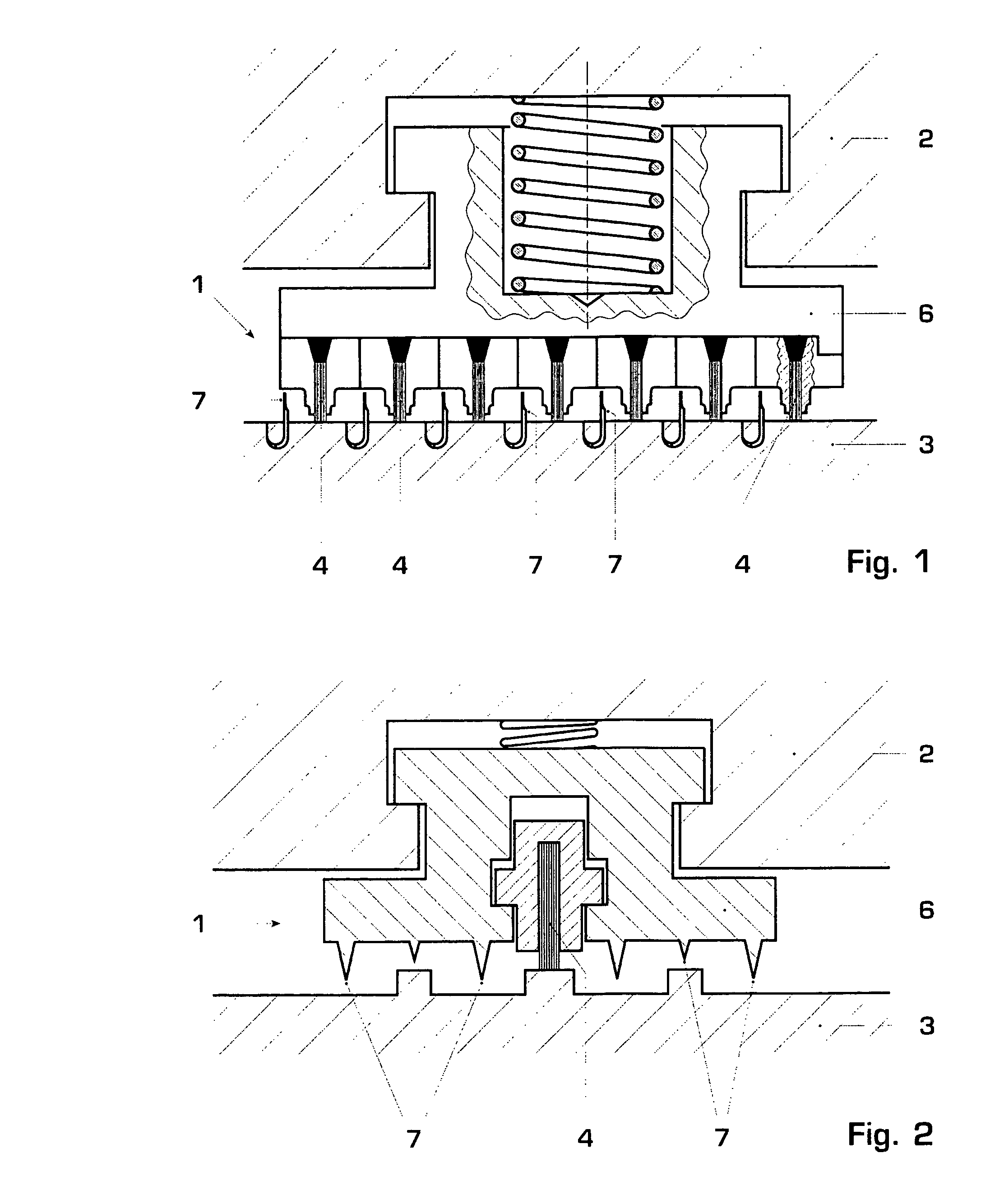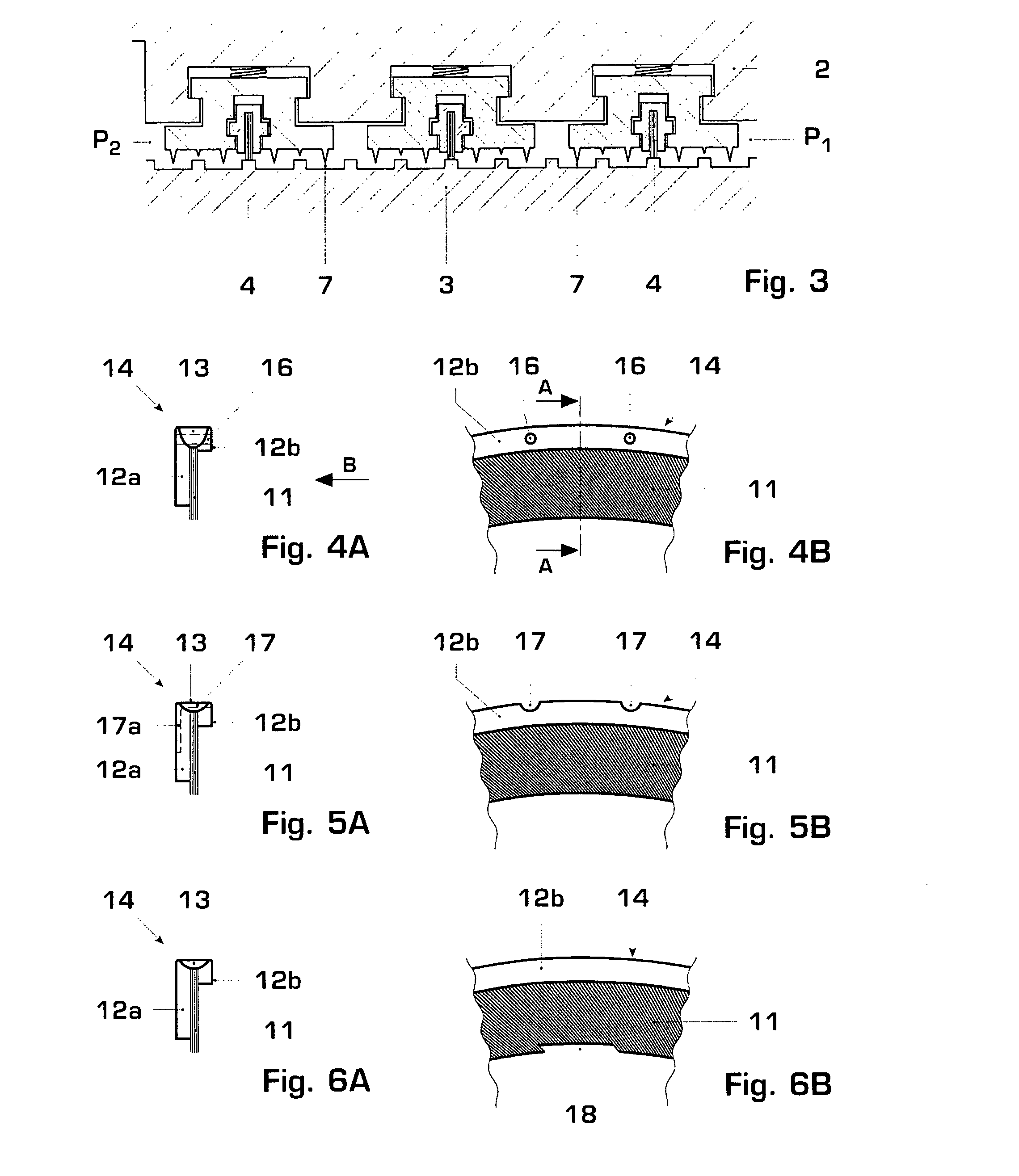Sealing arrangement using flexible seals
a sealing arrangement and flexible technology, applied in the direction of engine sealing, leakage prevention, machines/engines, etc., can solve the problems of loss of performance or resistance, worst recoverable leakage of each brush seal, failure of flexible elements, etc., to reduce the performance of flexible seals, reduce the effect of pressure drop, and reduce the radial clearan
- Summary
- Abstract
- Description
- Claims
- Application Information
AI Technical Summary
Benefits of technology
Problems solved by technology
Method used
Image
Examples
Embodiment Construction
[0031] The brush seal 14 shown in FIGS. 4A and 4B is a form of flexible seal comprising an annular brush 11 (serving as a ring of flexible sealing material) consisting of a closely packed array of bristles, the outer ends of which are trapped between two metallic backing members 12a, 12b which are connected by a weld 13 which also secures the bristles 11. The downstream backing member 12a is longer than the upstream backing member 12b, so as to support the brush 11 against the pressure on the upstream side of the brush seal. This construction is one of several brush seal constructions already known.
[0032] The brush seal 14 is one of a series of seals in a sealing arrangement between first and second relatively rotatable bodies of a turbine. In a steam turbine, for example, the sealing arrangement may be between a stationary casing and a balance piston, which is part of the rotor. Alternatively or additionally, the sealing arrangement may be provided between a stationary casing and ...
PUM
 Login to View More
Login to View More Abstract
Description
Claims
Application Information
 Login to View More
Login to View More - R&D
- Intellectual Property
- Life Sciences
- Materials
- Tech Scout
- Unparalleled Data Quality
- Higher Quality Content
- 60% Fewer Hallucinations
Browse by: Latest US Patents, China's latest patents, Technical Efficacy Thesaurus, Application Domain, Technology Topic, Popular Technical Reports.
© 2025 PatSnap. All rights reserved.Legal|Privacy policy|Modern Slavery Act Transparency Statement|Sitemap|About US| Contact US: help@patsnap.com



